Mapo Tofu
Mapo Tofu
Authentic mapo tofu at home is easier than you think: soft silken tofu in a spicy Sichuan chili pork sauce can be yours in under 30 minutes.
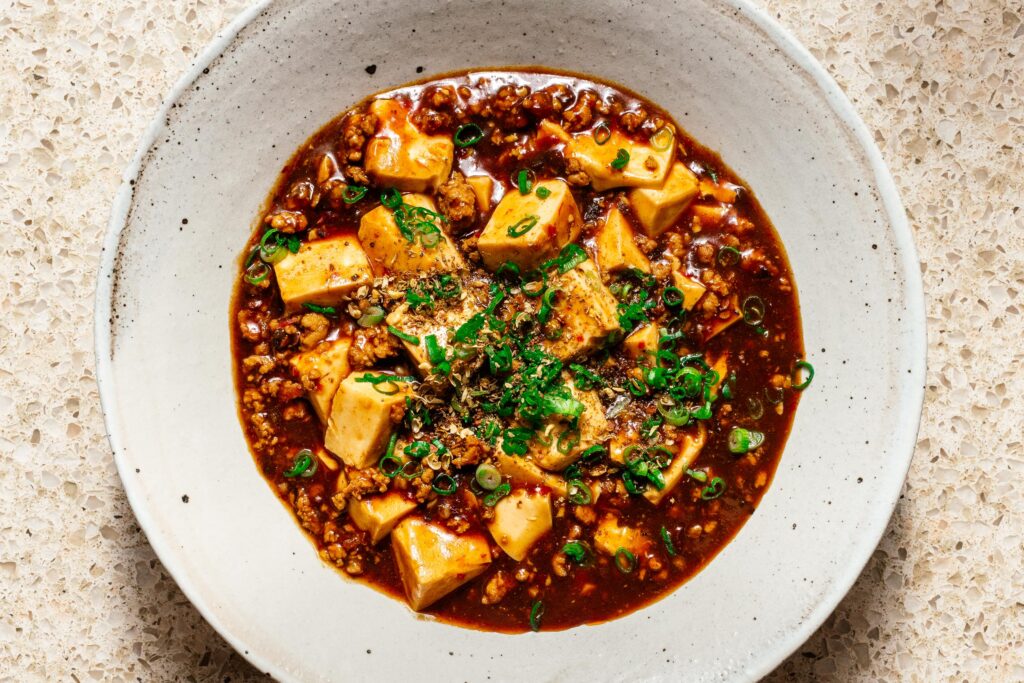
I’m addicted to the magical combination of silky soft tofu and saucy spicy pork. If you’re in the know, you know what I’m talking about: mapo tofu.
What is mapo tofu?
Mapo tofu is a famous Sichuan tofu dish that has plenty of mala, the signature numbing spiciness of good Sichuan food. If you haven’t had Sichuan food before, you might be scared of it’s fire-y red color, but once you get past that fear of heat, you’ll be coming back for more, more, more.
I never used to love spicy food, but I’ve always, always loved tofu. As a kid, it would be on the menu two, sometimes even three times a week. Partially because we all loved it, but mostly it was because my brother was a tofu addict. He would beg my mom to cook tofu for him. He didn’t even care how it was made, he just had to have tofu. It was one of those funny things that all of our family friends knew about. They even teased him, telling him that his future wife would have to be a tofu maker. Spoiler: sadly, my sister-in-law is not an artisanal tofu maker. But, she likes tofu too, and in particular, mapo tofu.
If you love tofu and you love spicy, you’re going to love mapo tofu too. And, if you’re not so big on spicy, the good thing about this dish is that you can adjust the spiciness level by altering how big of a pinch of Sichuan pepper you finish it with.
If you’re not familiar with it, here’s a quick breakdown: mapo tofu is a super popular Chinese dish from the Sichuan province. It has soft tofu in a spicy bright red sauce with a bit of ground pork. The name of the dish roughly translates to “pockmarked grandma’s tofu,” kind of like old grandma’s tofu. There are lots of mapo tofus out there but this is a traditional, authentic mapo tofu recipe.
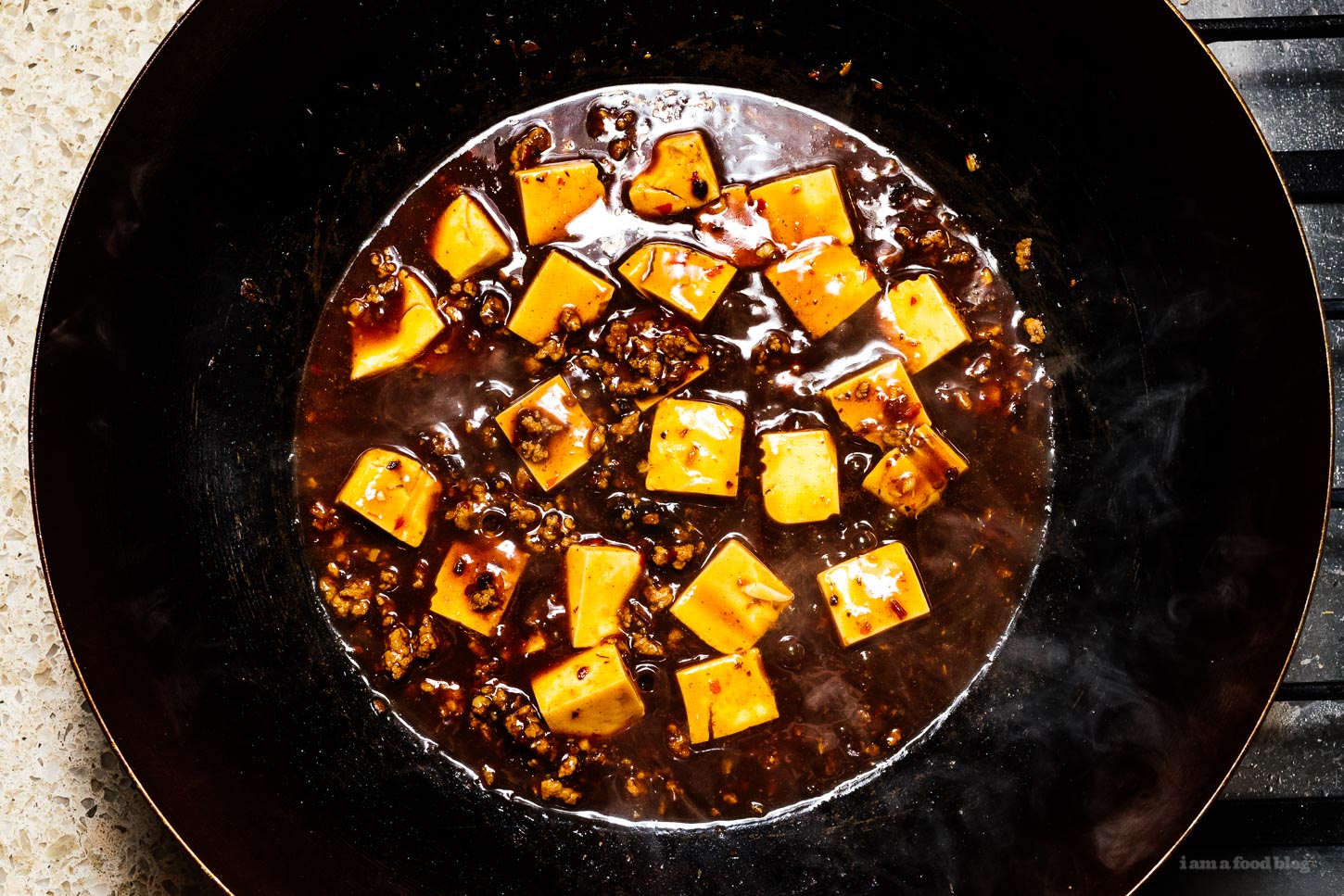
What does mapo tofu taste like?
Mapo tofu tastes spicy: both conventionally spicy with heat on your tongue, and málà, a numbing kind of spicy that is characteristic of Sichuan food. The sauce is pleasingly oily, which ampliflies the spiciness and flavor. It also has a deeply savoriness to it thanks to the umami from the doubanjiang. Also key is the texture play mapo tofu has going on: the silky creaminess from the soft tofu coats your tongue and the crispy-ish bits of pork add a pleasing contrast to the overall softness and sauciness of the dish. Mapo tofu is soul food and maybe the best comfort food out there, especially when paired with perfectly fluffy rice.
Key Ingredients
There are two key ingredients to this tofu: chili bean paste (doubanjiang) and Sichuan peppercorns. You can find both of them at your local Asian grocery store. The other ingredients are pretty standard fare.
Doubanjiang. Sometimes, with authentic recipes, there’s that one ingredient that you have to search far and wide for. You’ll be searching the aisles wondering, is this worth it? I’m here to tell you that it is! Doubanjiang is a spicy fermented mix of soy and broad beans. It’s been called the soul of Sichuan cooking and it’s what will give your mapo tofu that glorious red hue. When shopping, you want to look for the Pixian (an area in China) variety if you can. It’s kind of like how, if you can, you want to buy champagne from the Champagne region in France. But, like champagne, if you can only find sparkling wine, don’t sweat it, Lee Kum Kee also sells a serviceable easier to find Cantonese style doubanjiang that they call chili bean sauce/toban djan. More about doubanjiang here!
Sichuan peppercorns. In regards to Sichuan peppercorns, you can buy pre-ground Sichuan peppercorn powder, but if they’re available, go for whole Sichuan peppercorns and toast and grind them yourself. The spice will be much more fresh and apparent if you do.
Soft tofu. Soft tofu is key to authentic mapo tofu. The tofu should be smooth, creamy, and soft.
Ground pork. There’s just a bit of ground pork in this dish, just enough to compliment the tofu.
Ginger and garlic. Ginger and garlic add a punch of aromatics.
Chicken stock. Chicken stock is what makes up the bulk of the sauce.
Cornstarch. We’ll use cornstarch as a thickener to make the sauce silky and smooth.
Soy sauce. Just a touch of soy for some extra umami.
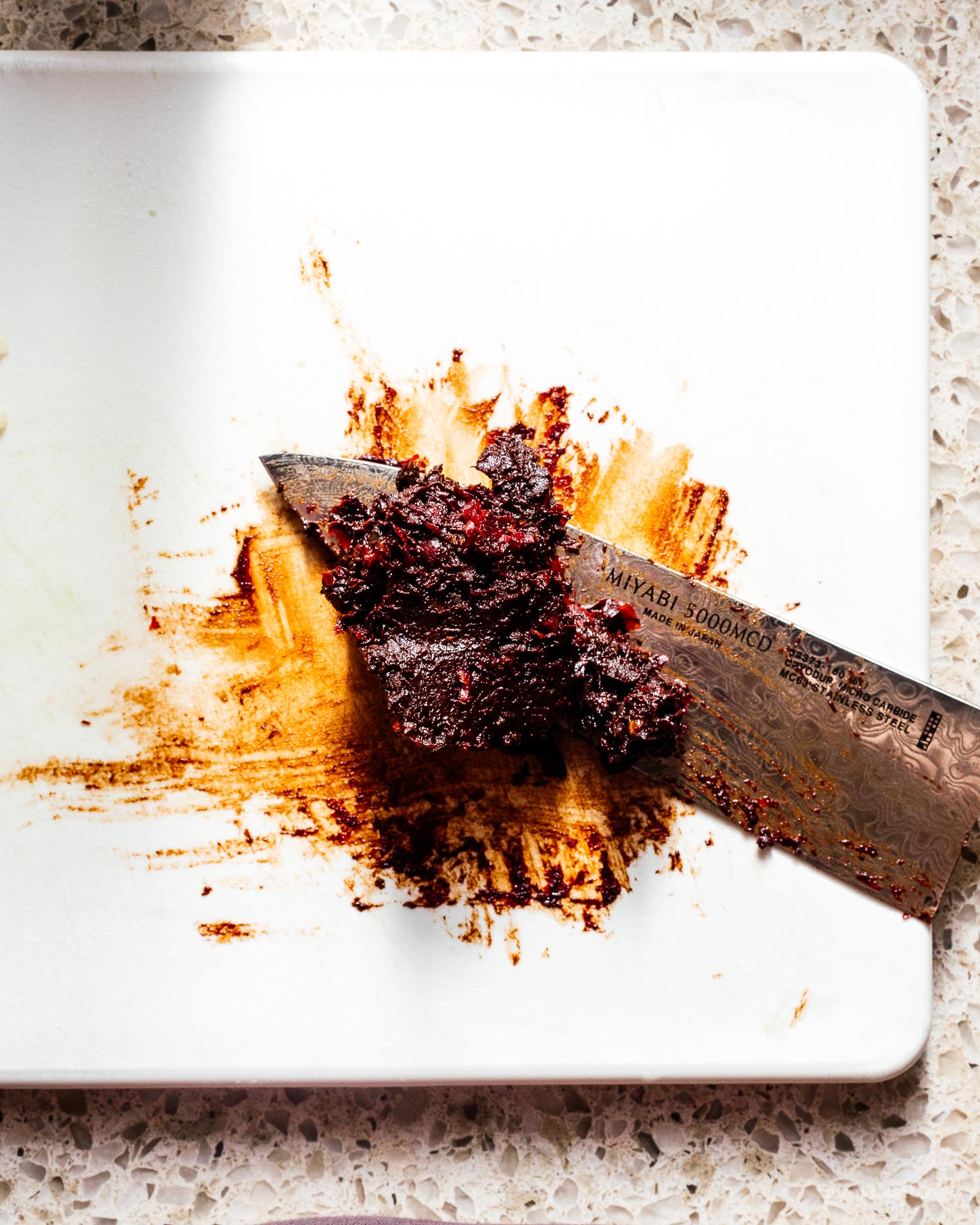
On tofu
I have to say, the most frequently asked questions about mapo tofu are of the following variety: What kind of tofu for mapo tofu? Can you use firm tofu in mapo tofu? It seems like everyone needs to know: which tofu is it! Lots of recipes out there say you can use firm or medium tofu and of course, you can, but if you’re going for an authentic mapo tofu, go for soft tofu. The tofu should be smooth and jiggly and almost break apart the moment your chopsticks touch them. I think a lot of recipes recommend firm or medium firm tofu because soft tofu is notoriously difficult to work with. But I believe in you. Do the soft tofu. It’s worth it!
Pro tip: to help your tofu stay together when you toss it into the sauce, blanch it. To blanch tofu: simply place in just simmered salted water for a couple of minutes and let it sit. Blanching tofu in salted water will season it and help firm it up. The tofu will become even more creamy and supple while retaining its shape when you mix it into the mapo sauce. It also has the bonus of making the tofu warm so that you don’t have to heat it up as much in the sauce.
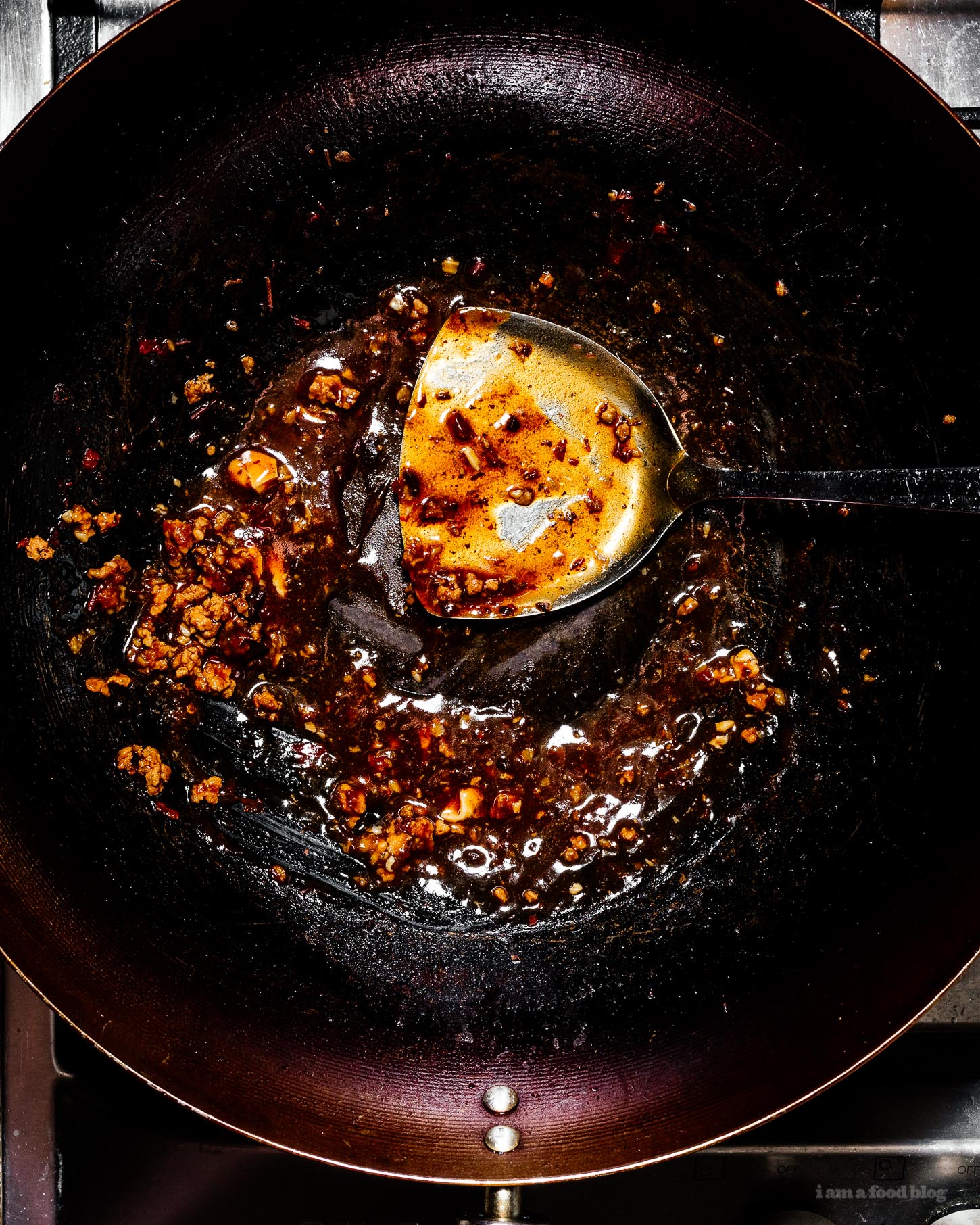
How to make mapo tofu?
Once you have your ingredients in hand, it’s a pretty simple recipe. You start off by blanching your tofu in salty water. Then, it’s just a question of frying the pork and doubanjiang, adding some chicken stock and thickening it up. Frying the doubanjiang and releasing the oils is what makes everything super tasty and fragrant. The sauce gets a bit of thickening up with cornstarch and everything is glossy and golden and clings perfectly to your tofu cubes. It’s a match made in heaven for fluffy rice.
Blanch the tofu. Gently simmer the tofu over low heat in salted water, then remove the pot from the heat and let it hang out in its salty bath.
Fry. Brown the pork so it crisps up a bit then add the doubanjiang and fry it so that the heat releases its spicy red oils. Stir in the garlic and ginger.
Sauce. Add the chicken stock and soy sauce and bring everything up to a bubble. Add the drained tofu cubes and stir in a cornstarch slurry. Simmer until the sauce is thick and gloss then you’re ready!

Can mapo tofu be vegetarian/vegan?
Vegan mapo tofu: You can skip out on the ground pork and it will be vegan. If you have some dried shiitake mushrooms on hand, soak them, drain them, chop them up and give them a fry in place of the pork. Switch the chicken stock out for vegetable stock.
What do you eat mapo tofu with?
Traditionally mapo tofu is served with fluffy rice. You can also have mapo tofu with noodles (or zoodles), bread, you name it. Essentially it goes with any carb. We’ve even made mapo tofu pizza and mapo tofu poutine. And of course, it goes great with wonton.
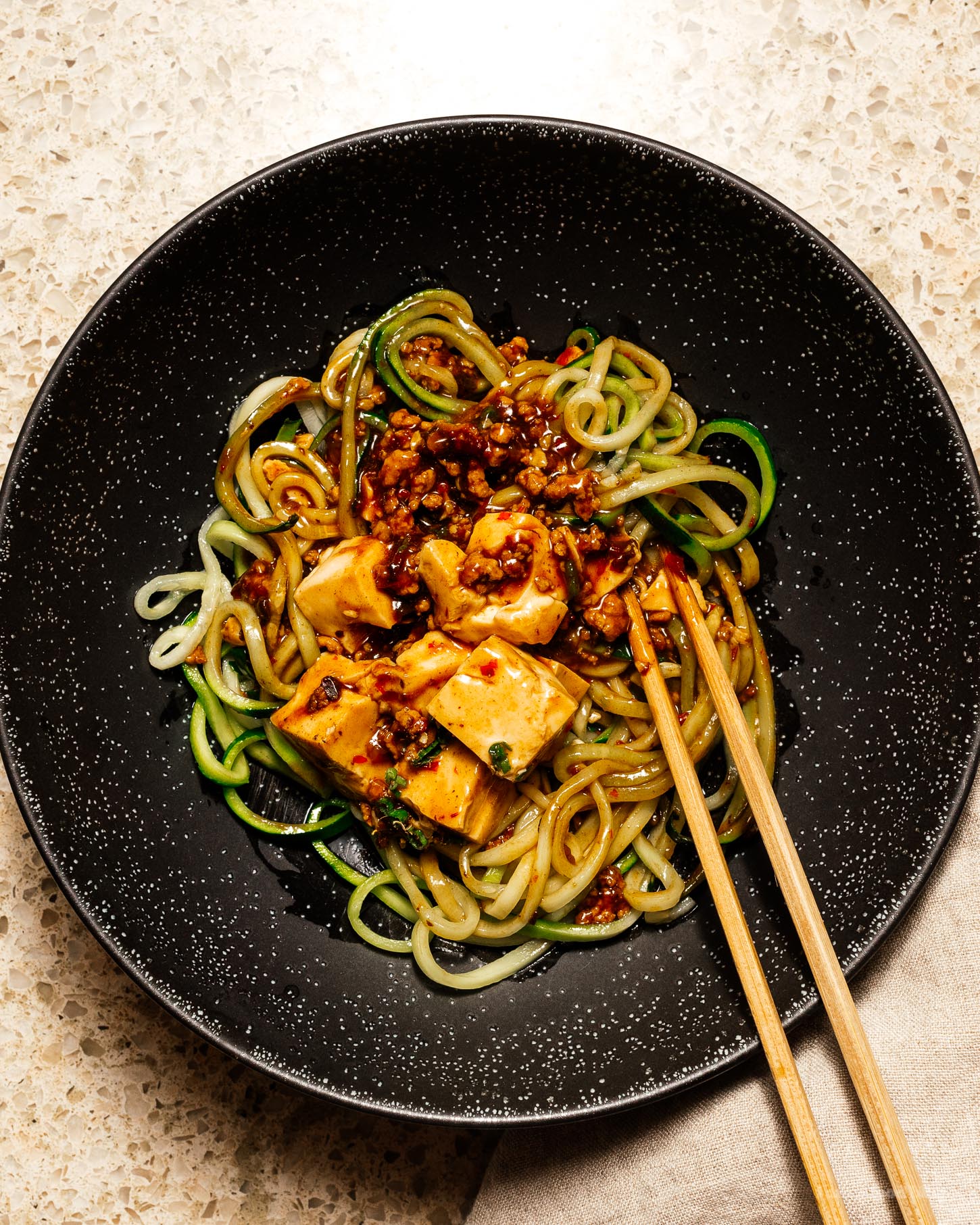
F
ReplyDelete